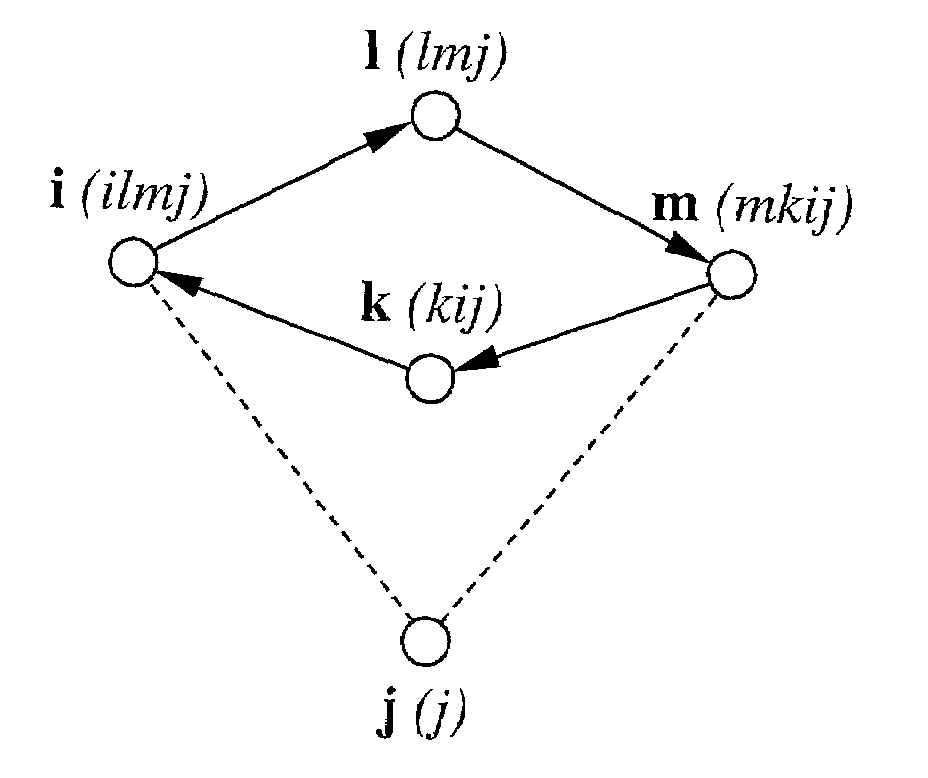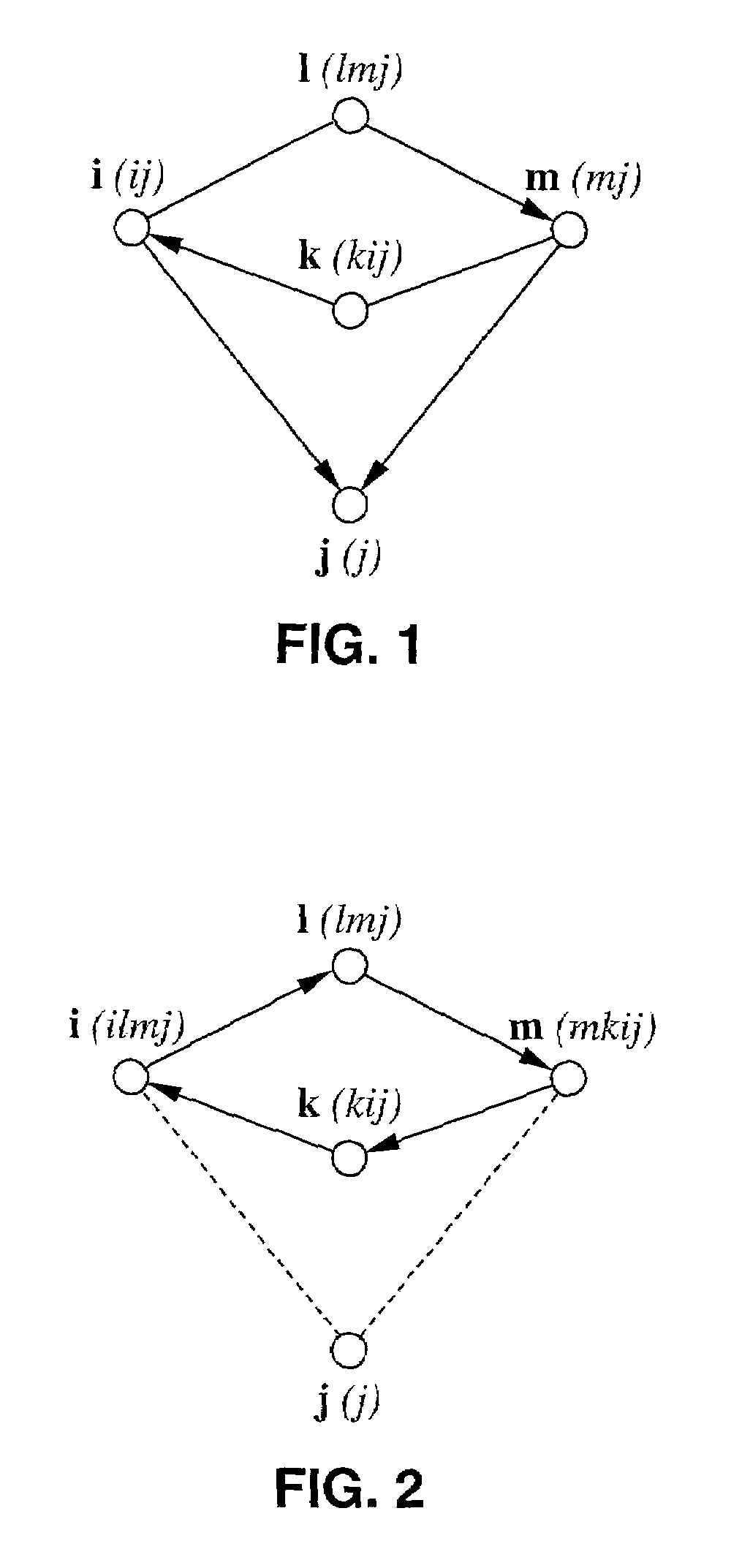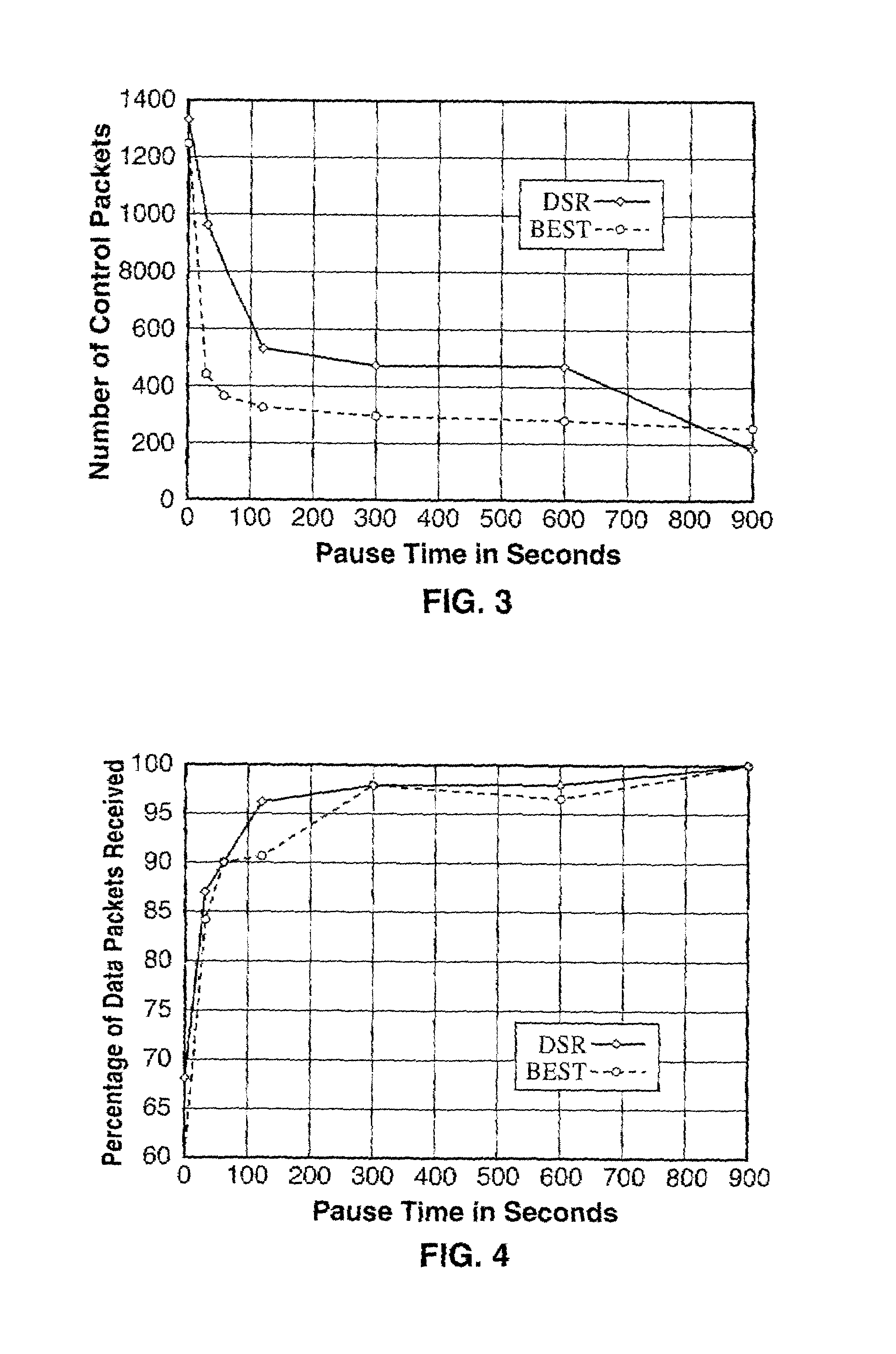Bandwidth efficient source tracing (BEST) routing protocol for wireless networks
- Summary
- Abstract
- Description
- Claims
- Application Information
AI Technical Summary
Benefits of technology
Problems solved by technology
Method used
Image
Examples
example 1
Performance Evaluation
[0066]We ran a number of simulation experiments to compare the performance of BEST against DSR. We chose DSR, because DSR has been shown to outperform other on-demand routing algorithms in previous studies. These simulations allowed us to independently change input parameters and check the protocol's sensitivity to these parameters. Both the protocols are implemented in CPT, which is a C++ based toolkit that provides a wireless protocol stack and extensive features for accurately simulating the physical aspects of a wireless multi-hop network. The protocol stack in the simulator can be transferred with a minimal amount of changes to a real embedded wireless router. The stack uses IP as the network protocol. The routing protocols directly use UDP to transfer packets. The link layer implements a medium access protocol very similar to the IEEE 802.11 standard and the physical layer is based on a direct sequence spread spectrum radio with a link bandwidth of 1 Mbit...
example 2
Scenarios used in Comparison
[0069]We compared the protocols using two traffic scenarios. In both scenarios, we used the “random way-point” model described in J. Broch et al. In this model, each node begins the simulation by remaining stationary for “pause time” seconds and then selecting a random destination and moving to that destination at a speed of 20 m / s for a period of time uniformly distributed between 5 seconds and 11 seconds. Upon reaching the destination, the node pauses again for “pause time” seconds, selects another destination, and proceeds there as previously described, repeating this behavior for the duration of the simulation. We used the speed of 20 m / s, which is approximately the speed of a vehicle, because it has been used in simulations in earlier comparison papers by J. Broch et al. and by P. Johansson et al., and thus provides a basis for comparison with other protocols. Two nodes can hear each other if the attenuation value of the link between them is such tha...
example 3
Simulation Results
1. Scenario 1: 8 Sources
[0082]FIG. 3 depicts the results for control packet overhead. The behavior of the protocols is very similar with BEST performing relatively better at higher rates of movement and plateauing off at lower speeds, while DSR performs better only for the case of no movement (pause time 900).
[0083]In FIG. 4, we see that the percentage of data packets received are comparable for all both protocols, with DSR having a 2% edge over BEST.
[0084]For the next two graphs. the results are shown only for the highest mobility rate (pause time 0). FIG. 5 shows the results of the distribution of hops taken by the data packets. This graph depicts the noticeable difference between the routes taken by packets in an on-demand vs a table-driven protocol. Since BEST reacts to new links coming up, we notice that most packets take optimum paths. In fact, 50% of the packets take more optimal routes with BEST.
[0085]The most dramatic differences are seen in the delay perf...
PUM
 Login to View More
Login to View More Abstract
Description
Claims
Application Information
 Login to View More
Login to View More - R&D
- Intellectual Property
- Life Sciences
- Materials
- Tech Scout
- Unparalleled Data Quality
- Higher Quality Content
- 60% Fewer Hallucinations
Browse by: Latest US Patents, China's latest patents, Technical Efficacy Thesaurus, Application Domain, Technology Topic, Popular Technical Reports.
© 2025 PatSnap. All rights reserved.Legal|Privacy policy|Modern Slavery Act Transparency Statement|Sitemap|About US| Contact US: help@patsnap.com



